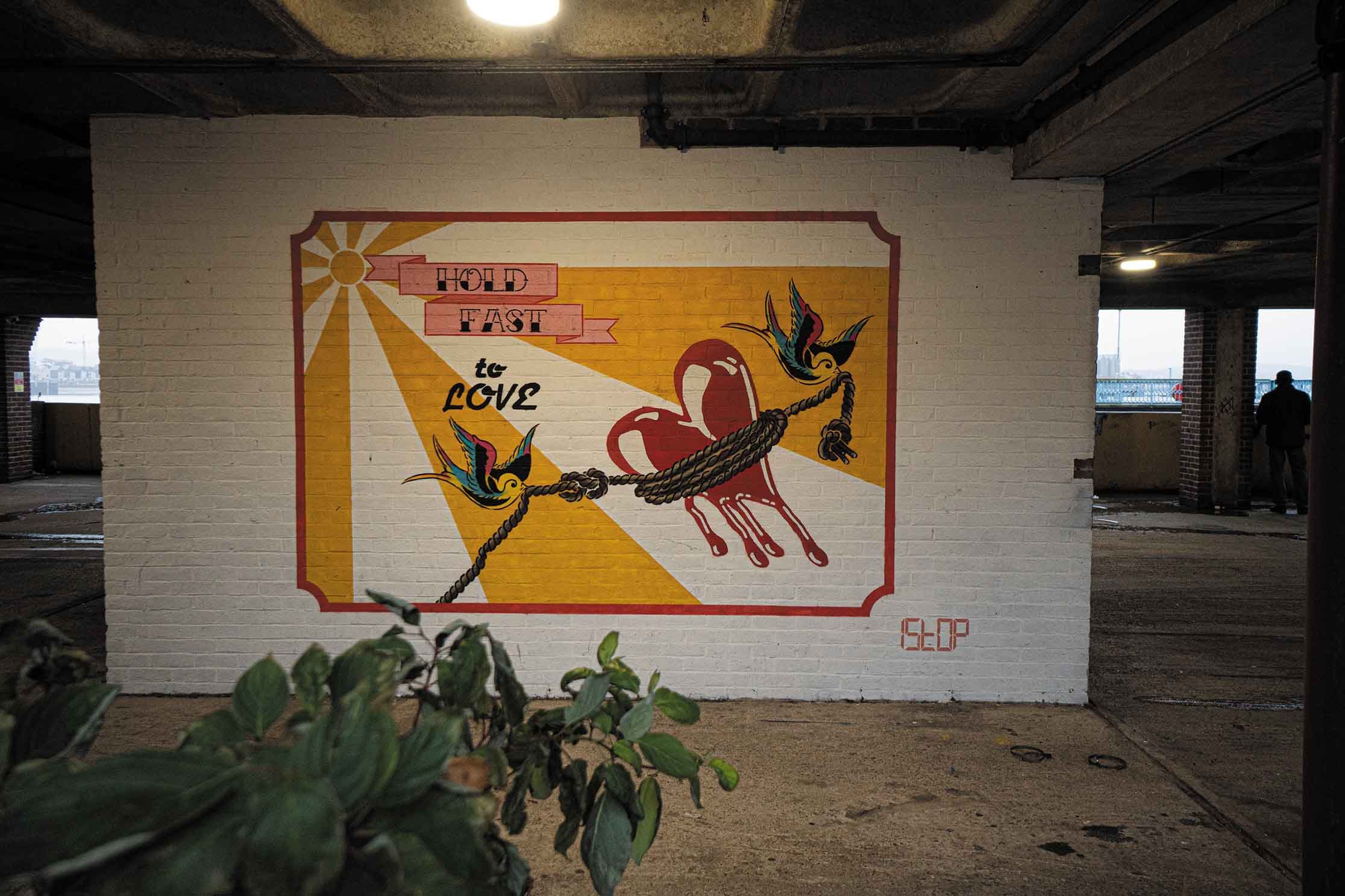Esoteric Kent - Secret passages and designed tarot decks
Come with us as Anna Willatt delves into the weird and wonderful corners of the Garden of England. First up, Kent’s deep-rooted connection to the occult tarot
Grey Fox Photography
After a scientific piece of research that the Apprentice candidates would be all over, namely a poll on my fairly meagre Instagram account, I’ve concluded that 73% of people think that the tarot is scary. It’s a pack of 78 cards. With drawings on them. How on Earth could they strike fear into people’s hearts?
Personally (@esoteric_kent), I’ve skirted around the tarot since my teens. I was a huge corduroy-flare-wearing, Afflecks Palace-shopping, rockish kid who bought the odd rose quartz, along with lots of nasty incense, and once had a runes-reading in a cupboard. The tarot always felt a bit out of grasp due to the number of cards to get my head around, but, thanks to lockdown, I am now in deep.
My ears pricked up on listening to a podcast (Deviant Women) that discussed the life of Pamela Colman Smith, the artist behind the most famous tarot deck around, that everyone in the 70s had access to - the Rider-Waite deck. AKA the one you’ve seen on Gucci and Primark T-shirts alike. Turns out that our lady Pamela was given a crap brief, not enough money and very little credit to complete the design of the deck - not unlike most creative work these days. She was pals with the theatre darlings of her day - Edy Craig and her mother Ellen Terry. According to Secrets of the Waite-Smith Tarot, Pamela most likely spent the summer of 1909 over at Ellen’s Smallhythe Place in Tenterden working on the iconic illustrations for the deck and many of the cards are based on scenes at the house, even creatures from that household (shout out to Snuffles the cat) and the surrounding landscape.
A trip over to Smallhythe Place, cared for now by the National Trust, revealed a charming building, full to the brim with ephemera from Ellen’s career and some of the famed objects from the cards, such as the lion-head stool from the Queen of Wands (that Snuffles also makes his presence known in and is based on suffragette legend Edy Craig herself). It doesn’t take a lot of imagination to see this property as a stronghold of feminine creativity and it would make sense that Pamela had sought space here to complete her creative project.
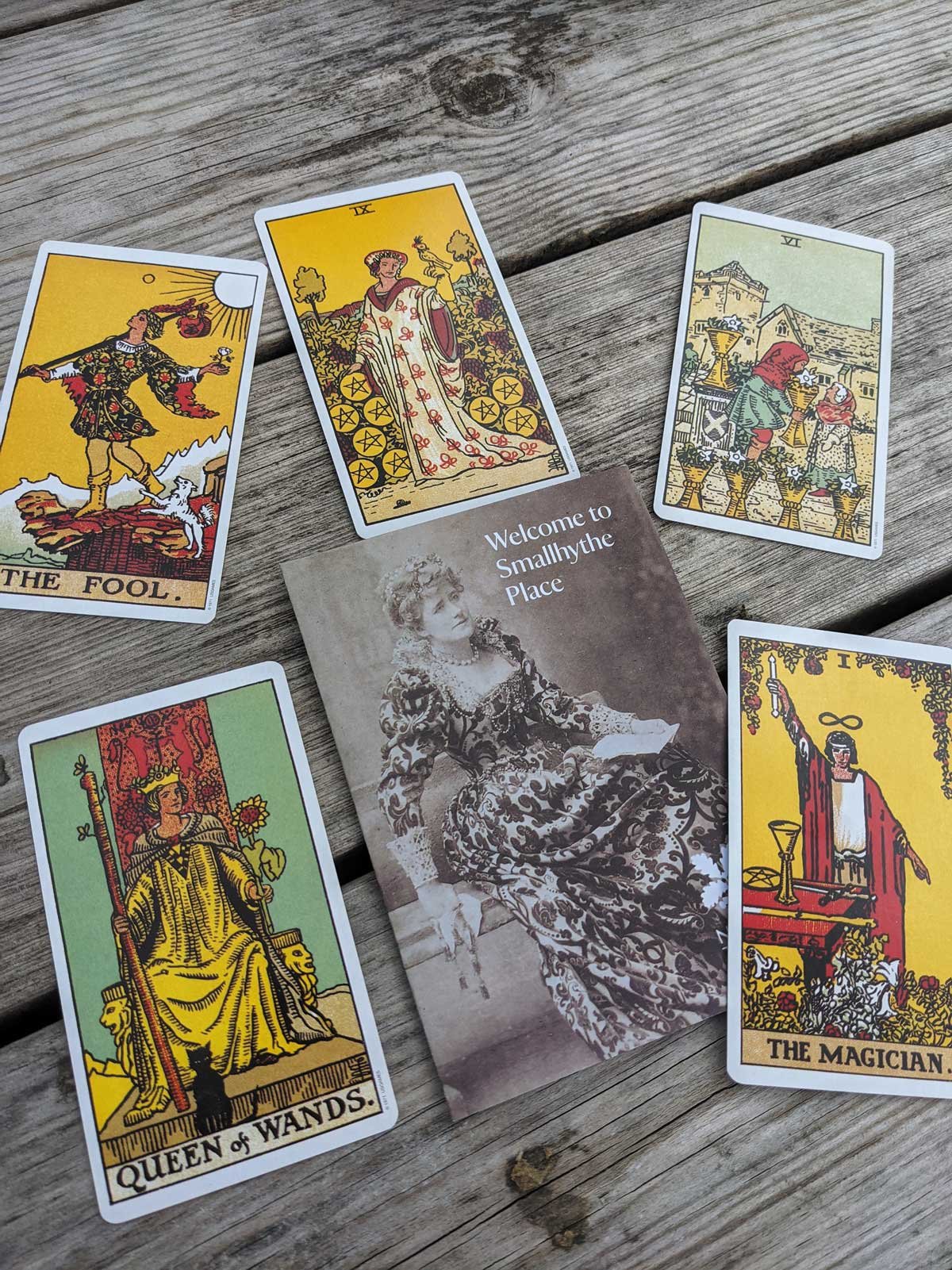

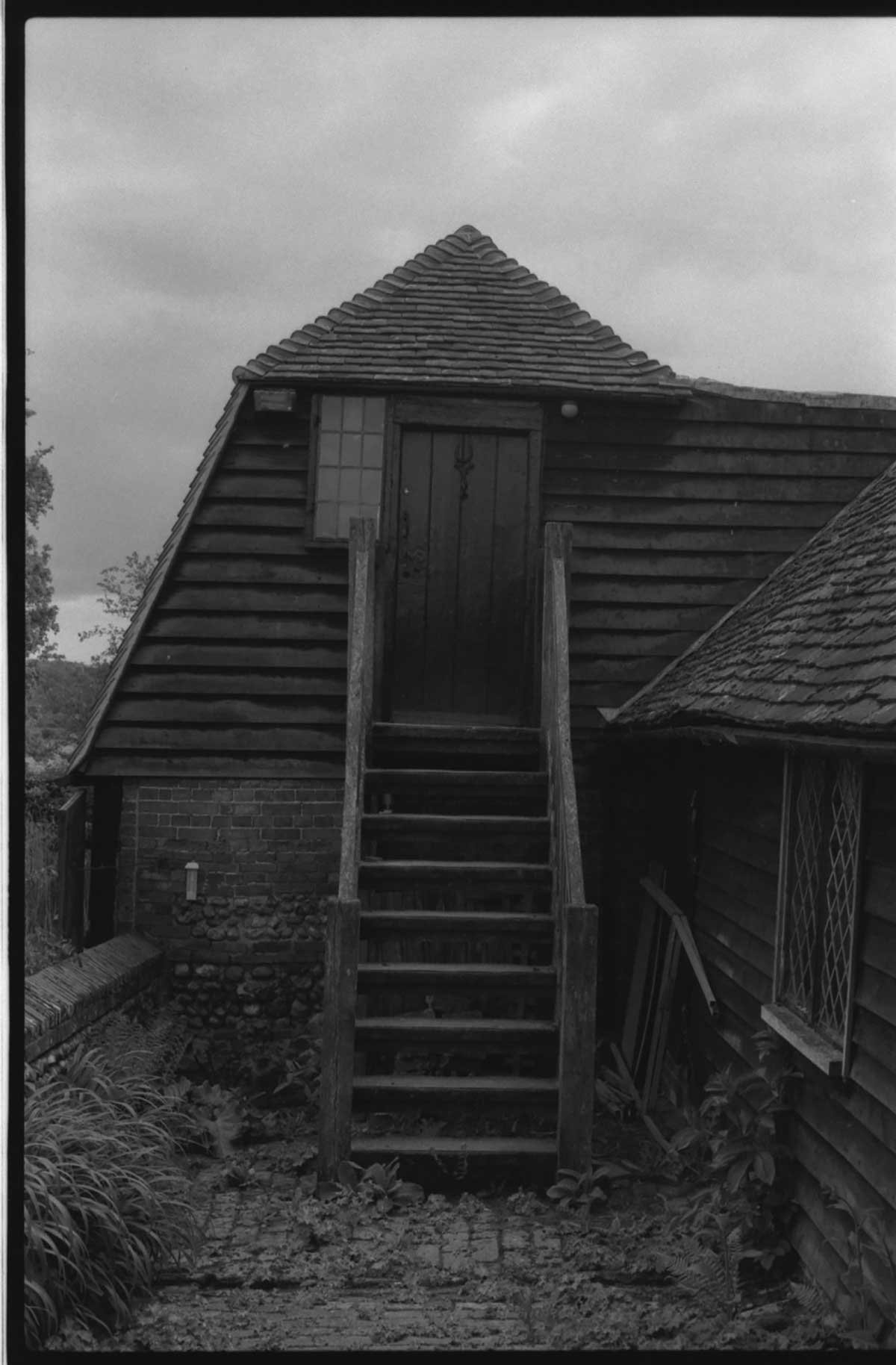
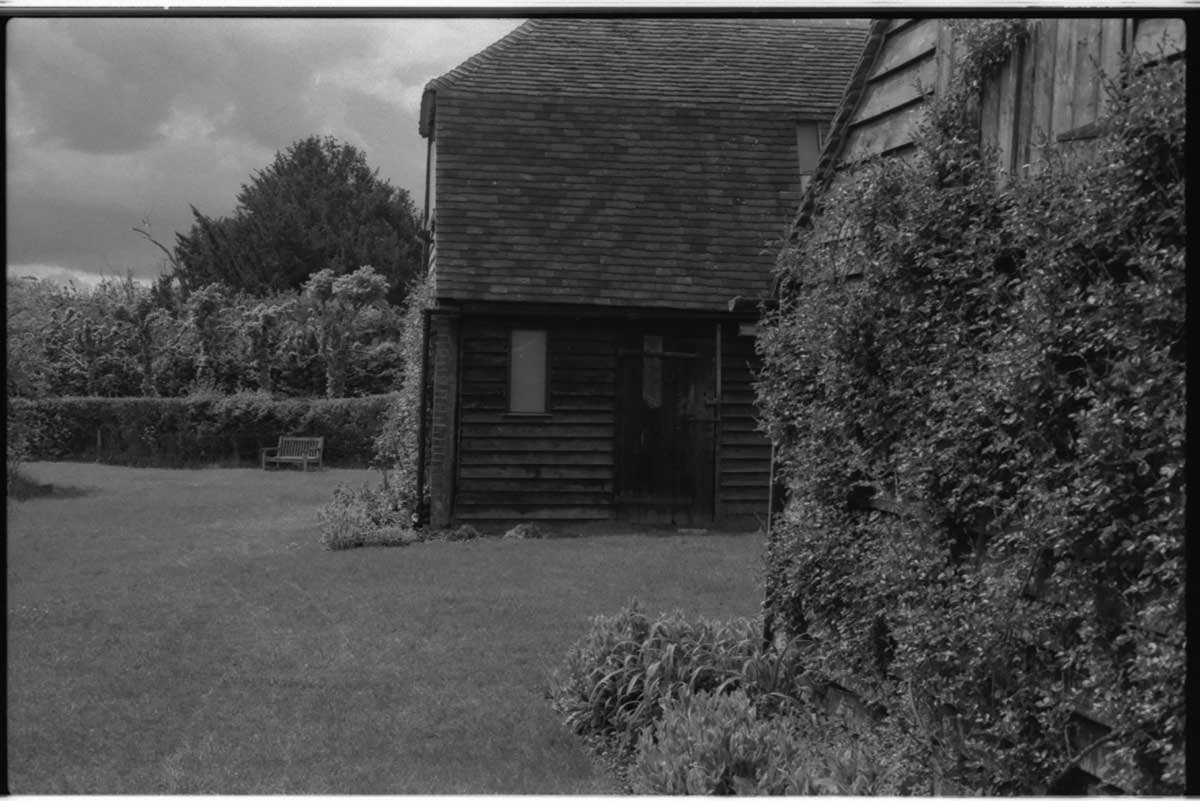
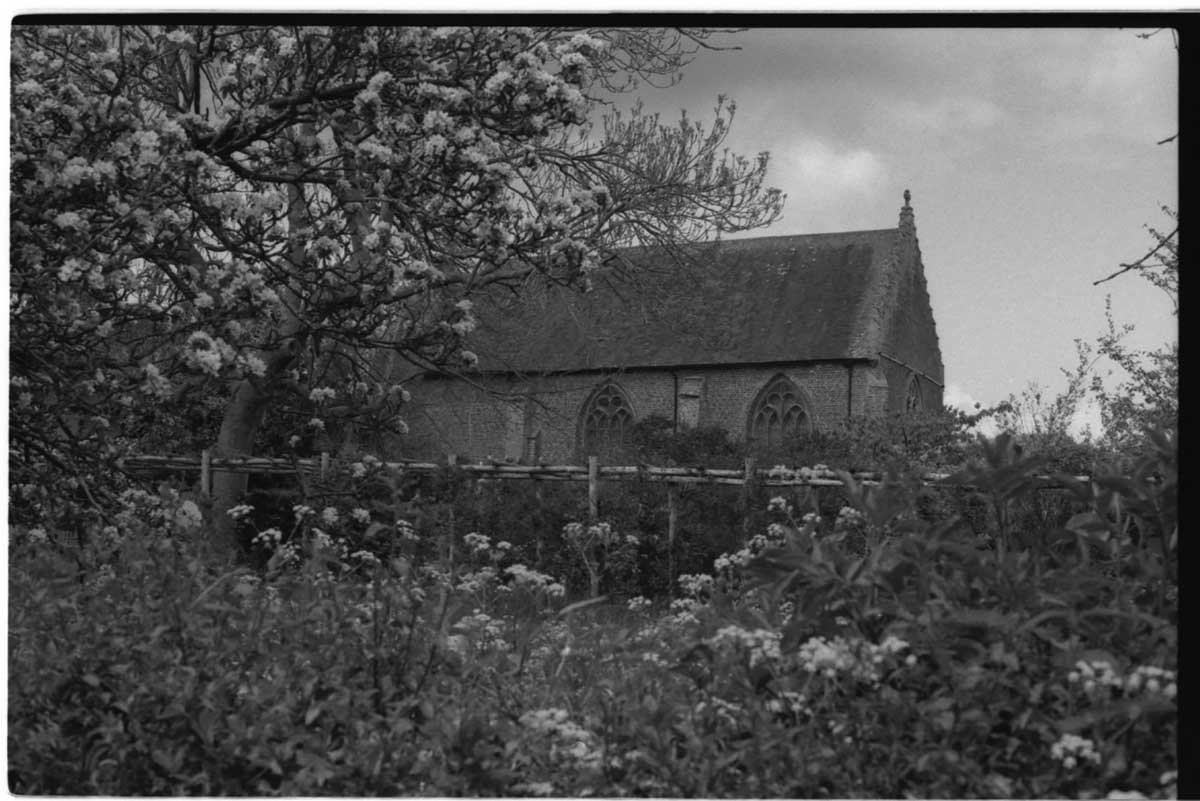

When I started preparing this article, I’d thought that the above was all I had. Cute but pretty tenuous, really, as Pamela was ‘spoon-fed’ the content of the cards based on previous decks and a combination of religions and mythologies. She also never progressed far in the Golden Dawn before converting to Catholicism. Oh yes, the Golden Dawn (Google it, it’s worth it). You knew that this deck was created for the Golden Dawn’s use and was the first lifting of the veil of many of the secrets of the Order, didn’t you? Eyes emoji.
What is more interesting is who ‘spoon-fed’ this creative brief to Pamela - A.E. Waite. A man whose contribution to the modern-day occult and general culture at this point, let’s be honest, is huge, but we’d all rather listen to his foe Aleister Crowley’s sermons on vinyl than pick up one of A.E.’s weighty, verbose books. So far, a bit of a letdown, I feel you thinking - the tarot was embedded in a secret society but created by a dull-sounding man. Well, A.E. definitely considered himself a mystic, not a magician like Crowley, but if he was really that non-threatening and boring, why would Crowley have taken time out of his flamboyant dark magick ways to lambast A.E. Waite regularly all over the papers? Oh, what a time to be alive that would have been - magicians fighting through the medium of print.
“I discovered that the cottage, while beautifully restored, held a couple of secrets - a tunnel in the basement and a secret door to the adjoining property that didn’t show up on any plans”
Let’s get back to Kent and its connection to this deck. So, we have the most famous artwork emanating from our dear county - that’s pretty big in itself. However, things got really interesting when I realised that A.E., later in his career, post tarot deck publishing, had owned places in both Ramsgate and Broadstairs. A bit like now, it wouldn’t seem unreasonable for a London-dwelling bloke to have a summer place by the sea and rent it out on AirBnB at extortionate rates, that sort of thing. But A.E. committed to being a DFL and moved, first to Ramsgate High Street for a couple of years and then selling up and moving over to Broadstairs - and that’s when things become really interesting.
Feeling all Nancy Drew about this discovery, I contacted the owners of A.E.’s Broadstairs home as soon as I realised it had housed the ‘temple’ for his new Order, the F.R.C. (Fellowship of the Rosy Cross). Luckily, I wasn’t about to bring someone’s ‘dream home’ vibes down and Jack, owner of Betsy Cottage, was already aware that A.E. Waite had owned his 400-year-old flint cottage and had started looking into a blue plaque. Through a couple of messages, I discovered that the cottage, while beautifully restored, held a couple of secrets - a tunnel in the basement and a secret door to the adjoining property that didn’t show up on any plans.
It was time to get back to Google and dig around in weird and wonderful long-out-of-print books - and I was rewarded in A.E. Waite, A Magician of Many Parts with a reference to a plan to buy the cottage adjoining Betsy to allow for more space for the Order - and also to solve the daughter/new wife dramas that even mystics can’t escape. This would suggest the reason for the clandestine door, but perhaps the tunnels date back before his time – nevertheless, I’m sure they used them for something spooky.
‘What about the tarot?’, I hear you ask. Yes, OK, I’m getting to that. After A.E.’s first foray into tarot creation, he wasn’t fully satisfied with the outcomes. He’d also left the Golden Dawn to establish F.R.C., so the symbolism he hid in that first deck wasn’t quite as accurate as he wanted. Unknown to historians until the early 2000s, A.E. Waite created a set of images, assumed to be used not as a tarot deck but as large-scale illustrations, presumably for use in the temple right here in Broadstairs. A.E. was in a more Christian stage in his life with F.R.C., so he needed an artist aligned with his thinking.
Betsy Cottage Broadstairs
The images for this deck came to light deep in the archives of the British Museum filed under Donec Attingham, the magical motto of the stained-glass artist J.B. Trinick. It appears the Australian artist Trinick had a studio in Margate, from which he was working on the stained glass for the 14th-century monastery Salmestone Grange, as well as a window for St Austin & St Gregory Church. J.B. was a member of Waite’s F.R.C., so it’s not a huge leap to assume that the men worked on the images for the temple right here in Kent. This series of images has not been printed, as far as historians are aware, but you can bet I’m going to be poking around in the tunnels of Betsy Cottage, with Jack’s permission, of course, hoping to find them.
If you’ve enjoyed this journey down the rabbit hole of Kent’s esoteric connections, head over to @esoteric_kent and let us know which topic you’d like to explore next. We’re thinking of Secret Societies, but let’s see if our author mysteriously disappears in the meantime.
If this article has piqued your interest…
Stay: A.E.’s Broadstairs home and the location of the F.R.C temple: airbnb.co.uk/rooms/49366881
Listen to: Pamela Colman Smith episode of deviantwomenpodcast.com
Read: Secrets of the Waite-Smith Tarot, Marcus Katz & Tali Goodman
Visit: Smallhythe Place, Tenterden: nationaltrust.com
Have a reading with: Leigh Dieguno facebook.com/groups/739494149420131
Grey Fox Photography




